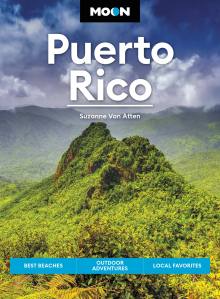The History of Puerto Rican Rum
Sugar production was integral to the rise of Puerto Rico’s rum production. Sugarcane rootstocks were introduced to the island by Juan Ponce de León in 1506, followed by the first sugar mill in 1517. Molasses was a by-product of the sugar refining process, and it was soon discovered that mixing it with water and allowing it to ferment in the sun produced the delicious spirit. Sugarcane plantations flourished on the island, in large part because of the work of enslaved people. Even after slavery was abolished in 1873, the sugarcane industry remained robust.
In 1944 there were 34 sugar mills on the island, but the industry all but collapsed in the 1960s. Today there are only two mills and one refinery in operation, but that hasn’t stopped the rum-making operations . Today, most of the world’s supply of rum is produced in Puerto Rico. Bacardí is the top-selling brand, but it’s not the only game in town. Serralles Distillery in Ponce produces the well-regarded brand Don Q. Most locals recommend Ron del Barrilito, made in Bayamón, as the island’s most prized brand. In recent years, several small-batch craft rums have come to market, including Rum Caray, made in Juncos, and Trigo, which is from Bayamón.

Here are some ways to explore the flavors and history of the island’s favorite elixir:
Ron del Barrilito has been making its highly prized rum in Bayamón since 1880. The small-batch rum uses no artificial ingredients or colorings, and it’s aged in vintage Spanish sherry barrels. Visitors can taste the distillery’s varieties, including the rare five-star rum, and take a mixology class.
Casa Bacardí Visitor Center is a popular tourist attraction devoted to the history of the top-selling rum in the United States. The company is still owned and operated by descendants of founder Don Facundo Bacardí Masó. No rum is made on-site, but you can see displays of objects used to make rum in its early days and advertisements through the years. Special rum tasting and mixology tours are available for an additional fee.
Castillo Serrallés is proof of how lucrative rum production was for its makers. Built atop a mountain overlooking Ponce in 1934 for Eugenio Serrallés, founder of Serrallés Rum Distillery, this stunning four-story Spanish-Moroccan-style mansion contains many of the Serrallés family’s original furnishings. One room in the house has been converted into an exhibition space that explains and illustrates how sugarcane is processed and turned into rum.
The piña colada, a frozen concoction of rum, coconut cream, and pineapple juice, originated in San Juan. There’s no disputing that. But the question remains: Who invented it? Ramon “Monchito” Marrero, a bartender at Caribe Hilton, claimed to have made the first one in 1954 after three months of experimentation. Rumor has it that Joan Crawford said the drink was “better than slapping Bette Davis in the face.” But Spanish-born bartender Ramon Portas Mingot also claims to have made the first one at the Barrachina, a restaurant in Viejo San Juan, in 1963. The difference between the two versions is Caribe Hilton makes it with ice and Barrachina makes it with water and freezes it before blending it. You can try one at both establishments and decide for yourself which one is best.
Chichaito is a clear, thimble-sized drink often served after a traditional Puerto Rican meal, as well as in most bars. (Its name is slang for “little fornicator.”) It is made from equal parts rum and anise-flavored liqueur and is downed in a single gulp that packs a powerful punch. La Casita Blanca in Santurce sends out a complimentary round after dinner.
Taste of Rum is an annual festival held in the spring that offers the opportunity to sample an array of Puerto Rican rums . The one-day event held in Viejo San Juan also features educational seminars, competitions, live music, dancing, and food vendors.
Pin for Later


